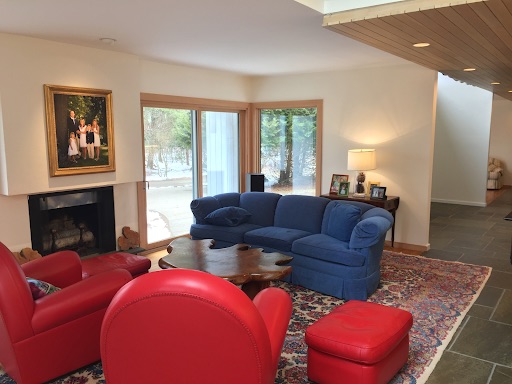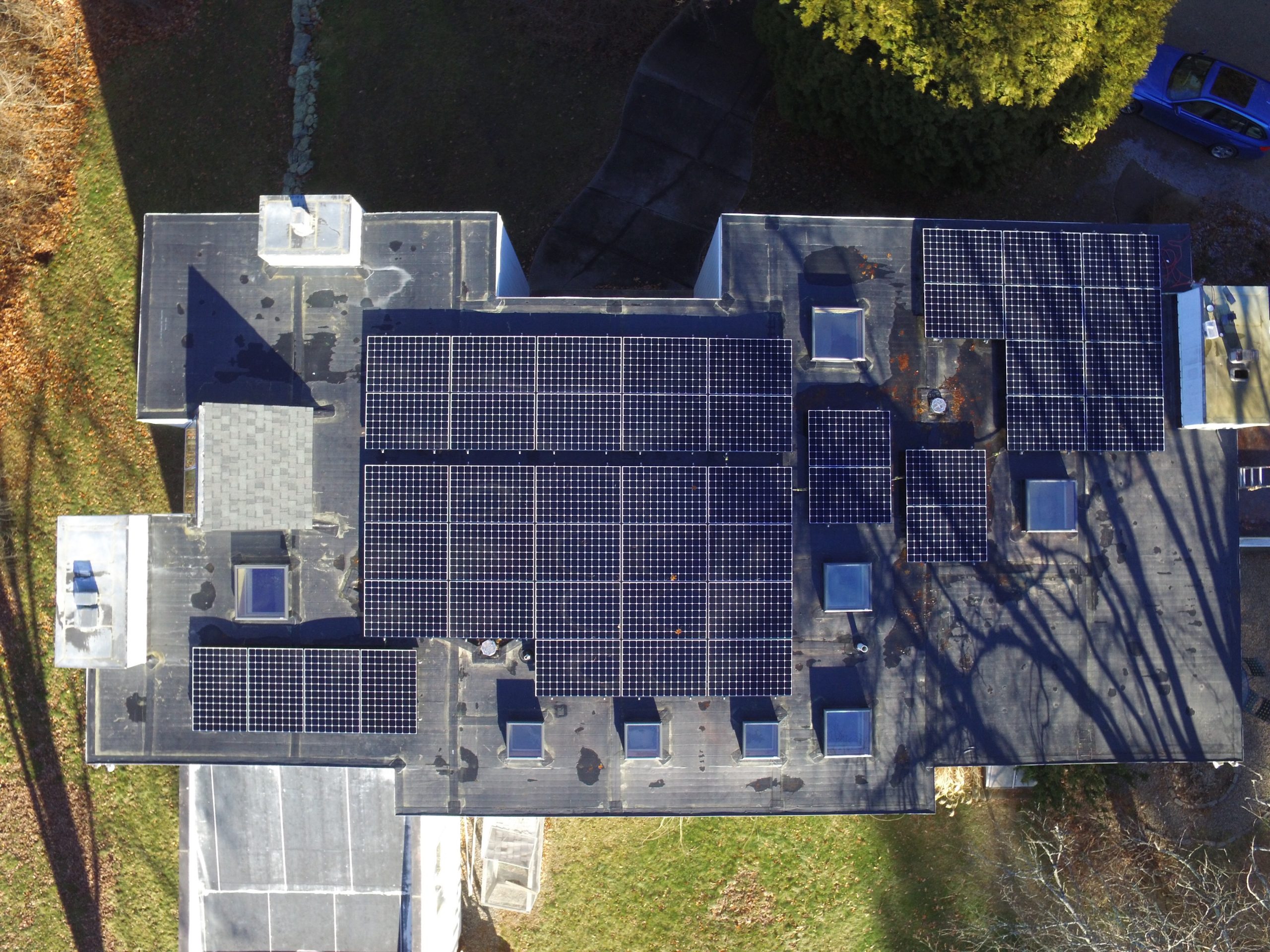I own a 5,400 square foot home built in the 1970s – not exactly the height of energy-efficient building science. Energy efficiency matters to me, so I did a deep-energy retrofit and successfully achieved my net zero carbon goal. While doing any deep-energy retrofit is certainly an achievement, what I think is worth sharing is that I am making money doing it. In fact, the return on investment on my zero-energy retrofit is higher than that of my retirement investments. Including Massachusetts state incentives, the ROI on my zero-energy retrofit is about 15% per year, based on averaging cash flow projections over 25 years. No fees, no taxes, no volatility. That’s over double the return on my retirement investments this year.
I am a physicist by training so I have a solid understanding of technologies like solar panels, heat pumps, and low-E, triple-glazed windows. I also have an MBA from Harvard Business School and spent 20 years as President or CEO of private and public companies. So I also understand how to use discounted cash flow analysis (the standard way companies analyze investments) to make financial calculations like net-present value (NPV) (a measure of the total profit on an investment) internal rate of return (IRR) (a measure of return on investment) and payback period (how long it takes to get your investment back). Every day for the past two years, I have kept detailed records of my heating oil use and my electricity use in order to measure the effect of each improvement made to our home. My results are based on my own experience rather than generalized claims made by manufacturers or installers.
In going zero, I only took measures that made financial sense, i.e., upgrades that paid for themselves with the savings on heating and electricity bills. This excluded doing many things typically done in deep-energy retrofits:
- I did not remove and replace my siding to add insulation because it is so expensive that the savings on utility bills would never pay for it. Instead, I added 12” of fiberglass to the ceiling of my basement. This cost me $1,000 and paid for itself in four months. I installed it myself. The return on investment is over 100% per year.
- I did not install geothermal (ground-source) heat pumps because modern air-source heat pumps are almost as efficient but are about one-quarter the cost. My heat pumps are about four times as efficient as my old oil-fired furnace. We installed two heat pumps, one for the upstairs zone and one for the downstairs zone, at a total installed cost of $23,000. The savings on the oil bills (after accounting for the extra electricity the heat pumps use) will pay for the heat pumps in about 9 years. That’s a return on investment of about 9% per year after tax. These heat pumps both heat and cool the house and replaced our old AC units. They cut our house energy use about 55% and are saving us about $3,000 per year. The heat pumps alone accounted for almost half of the reduction in carbon dioxide emissions from our home.
- I opted not to install solar hot-water panels because solar electric (photovoltaic) panels powering a heat-pump water heater are more efficient – not to mention, less expensive. The net-metering agreement with our utility allows us to accumulate a credit for excess energy generated during the summer months and then use those credits later. So, the solar electric panels make full use of the solar energy falling on the panels. While older hot water collectors rarely make full use of peak summer sun, they also usually cannot fully supply hot water during winter months. (You can learn more about the combination of photovoltaic panel and heat pump water heaters in this blog post.)
Instead of installing solar thermal panels, I covered the roof of my house with a 15kW array of 46 Sunpower 345W panels and covered the roof of my garage with a 13kW array of 40 Sunpower 327W panels. That sounds like a lot of solar panels, but I can make money on every solar panel. Solar panels are cheaper than they have ever been and are heavily subsidized. My total investment in solar panels, after the tax breaks and subsidies, was about $42,000. My savings is over $5,500 per year on electricity bills. I am generating electricity (after the subsidies and tax breaks) at about 7 cents/kWh, or about one-third of what I used to pay my electric utility company (21 cents/kWh when I made these calculations). The solar panels will pay for themselves in about 7 years. The return on investment is about 13% per year after tax.
I installed modern low-E triple-glazed windows which have about eight-times less heat loss than my old single-glazed windows. These do not pay for themselves, at least they won’t for decades. However, the additional cost of installing triple-glazed windows above the cost of installing double-glazed equivalents did pay for itself. In other words, since we were replacing our windows and patio doors anyway (they were 40 years old with duct-tape covering the cracks) it made sense to install R-5 and R-4 triple-glazed ones rather than R-3 double-glazed ones. The additional cost will pay for itself in about five years. The return on investment on the additional cost is about 19% after tax. In addition to the money we saved, the new triple-glazed windows look great and make the home cozier. They also make you look younger! OK, I exaggerate, but because they reduce condensation, they allow you to keep the humidity higher in winter, which helps to prevent your skin from drying out.

Our new wood-framed triple-glazed windows have almost eight times the insulation of the old single-glazed ones and have transformed the look and feel of our living room – including being able to see the garden which was previously obscured by the misted up panes of the old windows.
Our new wood-framed triple-glazed windows have almost eight times the insulation of the old single-glazed ones and have transformed the look and feel of our living room – including being able to see the garden which was previously obscured by the misted up panes of the old windows.
Other energy saving measures I took were very low cost and minor compared to the major ones listed above. These minor measures included insulating the hot water pipes and HVAC ducts, adding R-10 insulation to my R-40 roof, bringing it up to R-50, and draft-proofing my doors.
My overall investment for the entire zero-energy retrofit was $75,000 (after tax breaks and subsidies) and I am saving over $11,000 a year on heating and electricity bills. The investments pay for themselves in about 6 years. My return on investment (the IRR or internal rate of return) is about 15% after tax. That beats the growth of the Standard & Poor’s 500 stock index of 11.7% over the last 43 years. Additionally, the S&P return would be before tax and before fees whereas my return is after tax and with no fees. So I think I’ve found a way to both go zero and make money. This represents a milestone for the zero energy movement. Going zero is no longer like buying an expensive decoration for your house. It’s cold, hard cash in your pocket.
You can read more about my experience and a summary of my book detailing how I did it all at GreenZeroCarbonHome.com.
If you like the idea of going zero and making money but don’t have the cash available to make these investments, there’s good news for Massachusetts residents. You can get zero-interest Heat Loans to finance heat pumps and triple-glazed windows or low interest Solar Loans to finance solar panels. Massachusetts pays 75% of the cost (up to $2,000) for the installation of insulation through the MassSave program. This is one of the best returns on investment you will ever find! There are also Federal loans available. Though Massachusetts has a higher electric rate and more generous incentives than most states, many States offer significant subsidies and incentives – see the DSIRE database for details. The cost of solar is now so low that almost everyone can make money on deep energy retrofits if they focus on the most cost effective energy-saving measures.
It is only coincidence – or perhaps destiny – that my family name is Green.
David Green lives and works in Dover, Massachusetts.

